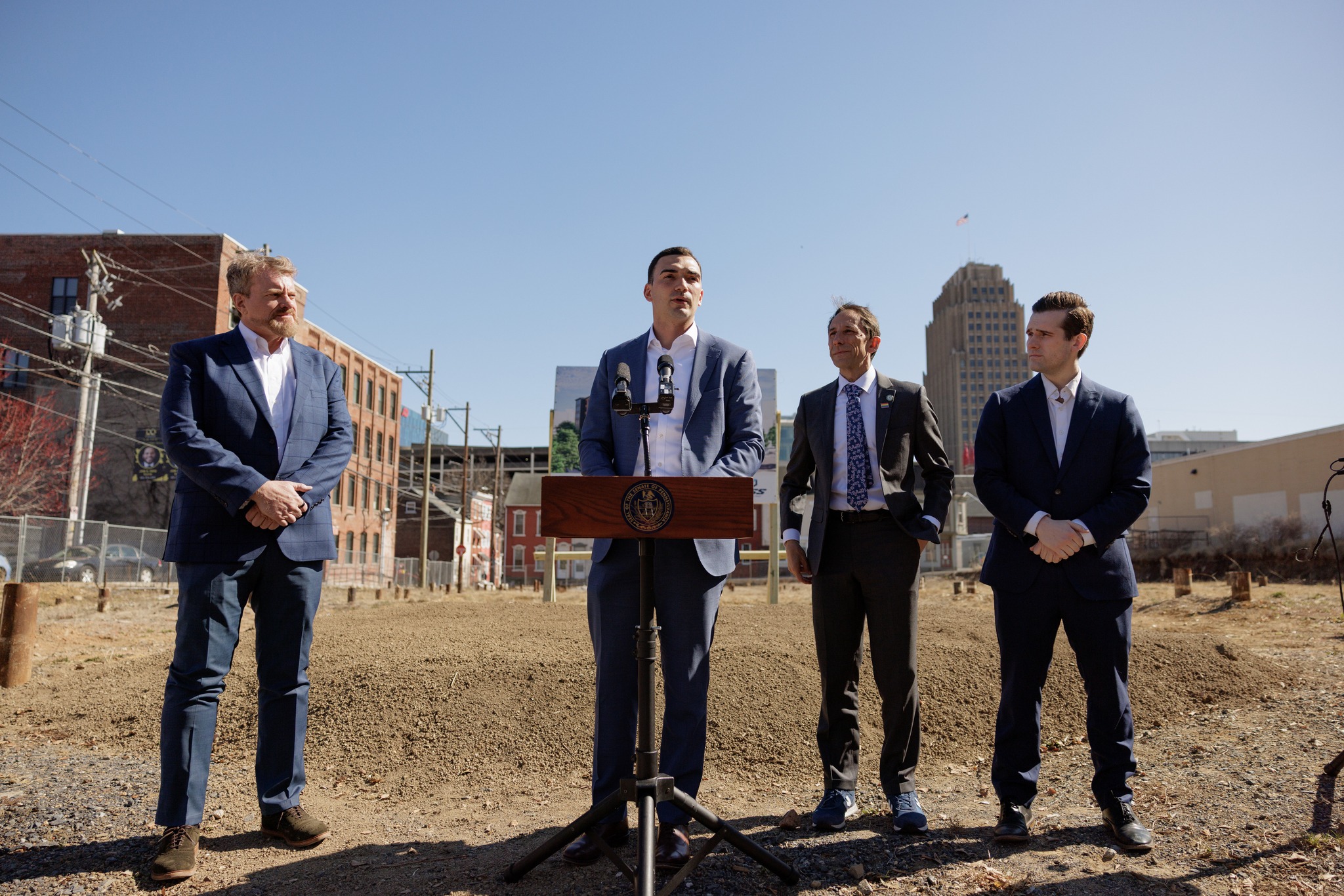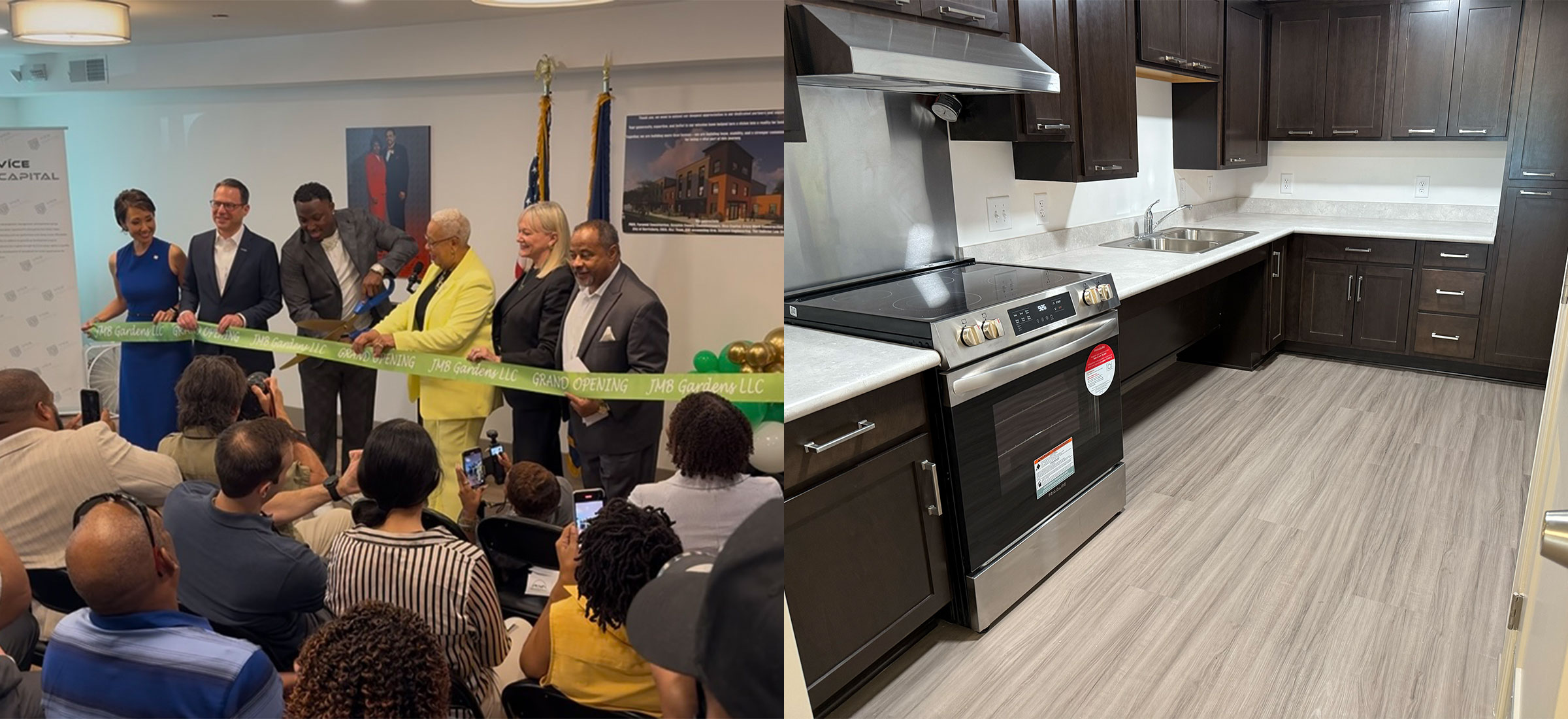Economic Development
Breaking Regulations: Changing zoning, codes and bureaucracy could key housing solutions
Pennsylvania politicians at all levels are scrambling to find effective solutions to the state’s affordable housing crisis.

Pennsylvania ranks in the bottom half of U.S. states when it comes to new housing construction. JENA ARDELL/GETTY IMAGES
Housing is one of the few issues that still has bipartisan consensus, as seen by lawmakers on both sides of the aisle calling for similar reforms to boost development.
Pennsylvania ranks near the bottom in the nation in new housing construction. From 2017 to 2023, only six states saw less development than the commonwealth, where permits issued for housing units lag well behind demand. Nor is this a recent trend: Pennsylvania has issued permits to add only 10% more homes since 2000, compared with a 25% increase nationally.
Obstacles to increasing the number of units available, including restrictive zoning, prolonged permitting processes – combined with a lack of new construction – have put the commonwealth in a precarious position.
With housing supply unable to keep up with demand, and rents and home prices only getting higher, it’s out with the NIMBYs – shorthand for the people whose response to adding affordable housing in their neighborhood is “Not in my backyard” – and in with relaxed regulations that could be a construction catalyst.
Statewide stock
Residents and renters have been paying the price for the lack of new construction in the commonwealth for years.
In a study by the Pew Charitable Trusts, researchers found that between 2017 and 2023, local governments in Pennsylvania issued building permits for only enough units to increase the state’s housing stock by 3.4% – well below the United States as a whole, which had a 7.5% increase during that seven-year period.
“From 2017 to 2023, (Pennsylvania) ranked 44th among the 50 states in building new housing,” Seva Rodnyansky, research manager at Housing Policy Initiative of The Pew Charitable Trusts, told City & State. “When there’s not enough homes, not enough supply to meet the demand, prices and costs go up. And that’s not just true in Pennsylvania; that’s true nationwide.”
Over that span, Pennsylvanians experienced a 46% increase in rent – significantly higher than the increase in wages and prices for goods and services during the same period.
“We have not allowed the development of real estate. I’m not just talking about land and building housing, but also conversion projects, retrofits, reuse or adaptive reuse,” state Sen. Greg Rothman told City & State. “Then, of course, inflation hit. The real estate market and the cost of construction went up.”
Rents grew significantly in smaller metropolitan areas such as Lancaster, Reading, Harrisburg and York, as well as in the Philadelphia suburbs and parts of western Pennsylvania, many of which gained population faster than they provided additional housing.
“At our current pace, it will take more than 200 years to bring about enough affordable housing to meet the current need in the city,” Philadelphia City Councilmember Jamie Gauthier told City & State.

Pennsylvania also lagged behind the national average in adding lower-cost homes, according to Pew. Apartment, duplex and townhouse construction was limited by restrictive zoning regulations, with many localities requiring only one single-family home to be built on land that could be used for several dwellings. Add on minimum lot sizes, parking minimums and more, and Pennsylvania’s restrictive regulations and lengthy permitting processes resulted in fewer residential units and higher rents and home prices.
Compared to other states that pushed for new construction, such as Utah, where the number of new permits issued equaled 19.1% of the state’s 2017 housing supply, the commonwealth is falling behind dramatically.
“The best way to bring high rent and high housing prices down for everybody would be to build more and to make building easier,” Rodnyansky said.
Room for improvement
Drawn-out zoning and permitting processes, on top of rising construction costs, have been a major deterrent for developers looking to see a return on their investment in housing.
“The easiest things that we can change are our city processes and cutting down on bureaucracy,” Gauthier said. “Our city bureaucracy should not be the reason why affordable housing budgets are not built.”
The need for more pro-development, or YIMBY – those whose response to adding affordable housing units in their neighborhood is, “Yes, in my backyard” – regulations is a bipartisan imperative, with officials on both sides of the aisle agreeing that cutting regulations and making it easier to get shovels in the ground is the way to increase housing supply – and affordable housing.
“That type of (restrictive) zoning was a concept created by developers to protect their investments .. It also makes it harder for new people to come in,” Rothman said. “Time is money and if you’re someone who has capital … you’re not going to buy a stock that you would have to wait five years to get your money back on.”

And while some municipalities and fast-growing areas can utilize new lots and parcels, many of Pennsylvania’s older cities have to rethink how to maximize their space and adapt existing structures to accommodate housing needs.
“Finding the land is really the biggest piece of that,” Marisol Maldonado, director of housing and community development at the Lancaster County Housing and Redevelopment Authorities, told City & State. “Developers are having a hard time finding land that they can build a significant project on.”
Allentown Mayor Matt Tuerk told City & State that existing housing and regulatory reform are the best option for cities that are largely out of space, such as those in the Lehigh Valley.
“In old cities with old industrial economies, a lot of our housing was built … long before you and I were born,” Tuerk said. “The idea that we should build more new housing in a city like Allentown is totally constrained by the fact that there’s existing housing already in all the places that we would like to build it.”
In cases where space is limited, zoning reforms to allow co-housing and building rehabilitation have to be even more strategic, he said, because construction of new lots or land parcels is “exceedingly rare.”
“To build new, you have to either demolish existing structures or get lucky with when a parcel makes itself available, either through a change in use, or through a disaster,” he said.
Cities such as Minneapolis and Houston, which relaxed minimum lot size and parking requirements for residential construction, could prove to be models for the commonwealth – but there is no quick fix.
In Minneapolis, “it was not just overnight that boom, they turned on a spigot,” Rodnyansky said. “This was more than a decade’s worth of work at the city and state level.”
The zoning and permitting reforms streamlined the process for developers in the city, he said, incentivizing housing construction and creating a friendlier environment for developers.
“They’ve done multiple things, including expanding zoning to allow more apartments, to expanding single-family zoning to allow more duplexes – two- or three-unit buildings on lots that only permit single-family homes,” Rodnyansky added. “You can’t credit any one of these measures with the type of boom and effect that it had, but cumulatively, that is a good recipe.”
Development dollars
When looking to incentivize affordable housing, municipalities often rely on state and federal funding to help nonprofits or other organizations spearhead development.
NeighborWorks America, a congressionally chartered nonprofit organization, is one of hundreds of nationwide networks that look to provide grants and technical assistance to grassroots community development organizations.
Anthony Chandler, senior director of real estate programs at NeighborWorks America, told City & State that in 2024, the organization leveraged more than $147 million in affordable housing investments to help build, repair or remodel thousands of units – a 78:1 grant leverage of their federally appropriated funds.

The key sticking point for many developers is a lengthy permitting process that quickly chips away at funding resources.
“A lot of times, when you have development and it drags on and on and on – that’s a cost,” Chandler said. “That deters private developers, because now they know they have to go through these particular elongated processes that will just drain their funding.”
The issue when it comes to affordable housing dollars, however, is that many localities are looking at the same limited funding streams.
“A lot of the agencies that do this work compete for the same type of money,” Maldonado said. “You’re not able to do a lot of development around affordable units if the agencies that create affordable units are competing for the same funds.”
Tuerk noted that the U.S. Conference of Mayors has emphasized the need for the federal government to “come up with a better approach to supporting the development of new housing in cities and across the country.”
But with federal funding now a looming question, the focus has shifted to the state level, especially as Gov. Josh Shapiro and Harrisburg lawmakers continue to work on the state budget this summer.
Shapiro proposed $1 million in dedicated funding to the State Planning Board to help municipalities enact growth-oriented housing policies, as well as increase staff so the board can help communities address permitting, zoning and code enforcement issues.
Shapiro also proposed increasing the PA Housing Affordability and Rehabilitation Enhancement fund, known as PHARE, by $10 million – bringing the total investment to $110 million by the end of 2028 – to assist in repairing existing homes and providing new construction. The proposal also pitched investing $10 million to help first-time homebuyers cover closing costs.
Rothman, who commended Shapiro for his prioritization of reducing regulatory burdens, argued that affordable housing requirements can hamstring developers looking to maximize their investments.
Affordable requirements “are only a Band-aid,” Rothman said. “We’re not going to solve this just by building residential subdivisions and single-family houses on a corner acre lot … The only solution to affordability is supply – a lot more supply.”
Onerous office space
Another development obstacle across the commonwealth is the ubiquity of old buildings, including factories and office space that are no longer in use in a post-pandemic world, where hybrid and work-from-home jobs have become commonplace.
Cities like Philadelphia are looking to convert underused office buildings into residential units to ameliorate the housing shortage.
While cities like Harrisburg and Lancaster have begun to repurpose buildings in an effort to increase housing affordability, Center City Philadelphia’s density lends itself to utilizing existing office space and skyscrapers in a way that benefits the housing market.
City Councilmembers, including Gauthier and Rue Landau, have said office conversions make sense for the city – especially if it wants to tackle homelessness.
“Office spaces (could be used) for shelter space or emergency housing spaces as well,” Landau told City & State. “I think (adaptive) reuse is a win-win.”

Gauthier added that, even if developers agree to develop affordable housing, there must be checks and balances in place to ensure they’re keeping their promises.
“(We created) a way to hold developers accountable for their affordable housing commitments,” Gauthier said. “So we want to incentivize more affordable housing by streamlining these processes, but we also want to continue to build trust between community stakeholders and developers with affordable housing commitments being made voluntarily.”
Code breakers
If there were an easy hack to the housing issue, it would be for cities, towns and municipalities to junk the existing codes in favor of pro-growth regulations.
Experts and officials agree that once regulations become less burdensome – anything from zoning and permitting reforms being put in place to lot and parking minimums being relaxed – the entire environment will become mofe conducive to development.
One option pitched in Philadelphia by Gauthier is to allow pre-approved housing templates that developers can choose from to fast-track the process from the start.
Chandler, who thinks this could become a trend nationwide, said that collaboration between nonprofits, developers and local officials will be crucial going forward.
If the proposal “fits in here, it’s approved, and then that way you can speed up the process,” he said. “It provides better opportunities for these nonprofit developers.”
He said that with or without consistent funding, giving localities and developers the chance to rethink how housing can be constructed will go a long way toward opening more doors.
“Uncertainty provides an opportunity to think outside the box,” he added.
And once the floodgates of new construction – and cheaper housing – are opened, officials agree that the commonwealth and its residents will benefit from developers’ ability to look at less conventional construction choices.
“What works in one municipality may not work in the neighboring municipalities,” Maldonado said. “I believe we’re gonna see a lot of creativity from these developers if zoning reforms do take place.”
